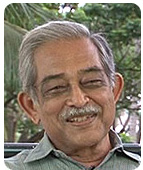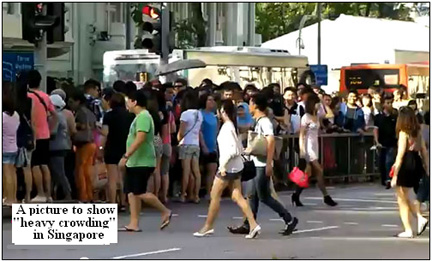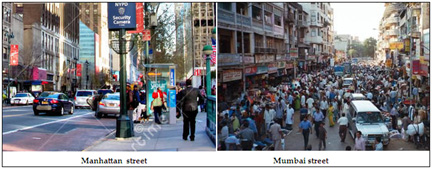Planning housing in crowded cities
Noted town planning expert says densely packed apartments need to spread out, reports S.Ananthanarayanan.
On Friday, 24th, architect and town planner Shirish Patel spoke on “Life between Buildings – the use and abuse of FSI” at the Observer Research Foundation (ORF), Mumbai. ORF is a think tank which arranges talks by persons with insight and experience in
matters of interest. Shri Narayana Murthy on ‘Skilling India’s young workforce’ , Mr. Deepak Gadhia, engineer and entrepreneur on 'Solar Enterprise through Solar Energy', and Dr. Sreerup Raychaudhuri, professor at TIFR, on the significance of detecting the
Higgs Boson, were among many other recent presentations.

Mr Shirish Patel is a civil engineer who was with the Mumbai Metropolitan Regional Development Authority and Mumbai Heritage Conservation Committee and among those who first imagined and later implemented the New Bombay project. He is also on the Board
of the Indian Institute for Human Settlements, Kengeri, Bengaluru. Erudite and soft-spoken, Mr Patel led the audience through a primer on the issues that arise when dwelling spaces are created – particularly the need to support residents when they step out
of the dwelling. The talk was largely about Mumbai but the principles are the same for any Indian city.
Floor Space Index
Floor Space Index (FSI) or Floor Area Ratio (FAR), as it is known the world over, is the ratio of the built-up area in a plot of land, to the area of the plot. Local administrations, considering the need to provide water, electricity and sewage services,
put a limit (or ceiling, may be more appropriate) on how much dwelling area a builder can construct on a given plot. Increase of the FSI is welcomed by builders, as they can sell more flats, and is equally welcomed by flat buyers, as it would increase availability
in the best areas and hopefully bring down prices. The ratio is between 1.3 and 3.8 in Indian metros. This compares with FAR in many cities in the world, but is far lower than the figure in New York or Singapore.
Shirish Patel started with the context of FAR as encountered in the major cities of the world (see table). In view of the high concentration of population in Mumbai, like in New York or Singapore, Shirish said, the World Bank was pressing for FAR to be
increased in Mumbai, and this was the demand of builders and citizen groups. But, said Shirish, along with the increase in the number of people housed over a unit area of land, there was the importance of space for amenities and social interaction outside
the dwelling space itself.
|
City
|
FAR
|
|
Sao Paulo
|
1
|
|
Mumbai
|
1.33
|
|
Chennai
|
1.5
|
|
Delhi
|
1.2 to 3.8
|
|
Amsterdam
|
1.9
|
|
Venice
|
2.4
|
|
Paris
|
3
|
|
New York
|
15
|
|
Singapore
|
12 to 25
|
In the context of FAR of 15 in Manhattan and 1.3 in Mumbai, Shirish displayed pictures of street scenes in Manhattan and Mumbai. Was it contradictory, that Mumbai, with the lower FAR, seemed to have more crowded streets?

Shirish noted that cities and even different parts of cities differ dramatically in layout and the use of space. To understand how a city should be developed, the planners and residents need to consider traditional space use, the number of floors in dwellings
and the number of people who use these spaces. Thinking in terms of FAR puts the emphasis on the available dwelling area and hence the area available for each resident. A more communicative measure, Shirish said, was to consider not the area available but
the level of crowding, particularly out there in the street. The difference between Manhattan and Mumbai, which affected street crowding, lay in the number of people using the dwelling space that the FAR allowed. In Manhattan, a typical flat of 100 m2 was
occupied by 1.8, say 2 persons. But in Mumbai, a 25 m2 flat was home to 5 persons. Over a hectare, this translates to 200 persons in Manhattan and 2000 in Mumbai. During the day, the large part of these people were out on the street, shopping for essentials,
for leisure, traveling to or from work, or at work. And Manhattan, with its lower crowding except in the busiest portion, had the use of an underground Metro network!

Working out crowding
Well, street crowding in the worst area in Mumbai compares with Midtown Manhattan, where they have FSI as high as 16.4 and also the relief of a high speed underground metro railway. But the bulk of Mumbai, with FSI just 1.12
to 3.66, is still as bad as second busiest part of Manhattan. It is clear that there are too many people in Mumbai for the available residence, street, market, office or park area.
With the number of residents, which is the population, not under the control of the town planner, Shirish saw review of the rent control laws which, at present, discourage investment in housing for tenancy, as one way to go. He is skeptical about public
housing or free housing and believes in legislation for inclusionary housing, or obligation of all new construction to set aside floor space for low cost housing. For this, as well as for investment in housing, there is need is to allocate more land for the
purpose. This would amount to providing access to open spaces in the vicinity of cities. But Shirish saw the hand of builders’ lobbies in diverting state funding to the kind of infrastructure that did not address this need, but sustained the shortage of housing,
and hence high prices. “And”, Shirish Patel quipped to conclude his talk, “the World Bank would like us to increase the FSI in Mumbai!”
[the writer can be contacted at simplescience@gmail.com]